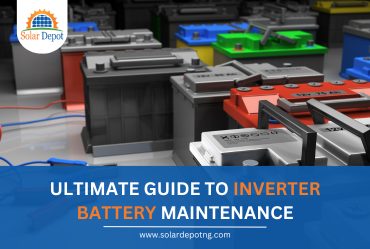Ultimate Guide to Inverter Battery Maintenance
Ultimate Guide to Inverter Battery Maintenance: How to Test and Identify Issues (Part I)
Inverter batteries play a crucial role in ensuring uninterrupted power supply during outages. Regular maintenance is essential to prolong their lifespan and optimize performance. This guide will explore DIY methods for testing inverter batteries at home and identifying potential issues.
Maintaining your inverter battery is key to ensuring reliable backup power for your home or business. By performing simple DIY tests and inspections, you can assess the health of your battery and address any issues before they escalate. In Part I of this guide, we'll cover the initial steps for inspecting your battery and identifying visible signs of damage or deterioration.
Inspect the Battery:
Begin by visually inspecting the battery for any visible signs of damage or abnormalities. Look for:
Broken terminals: Loose or damaged terminals can cause short circuits and pose safety hazards.
Bulges or bumps in the case: Bulging cases are often indicative of overcharging, while physical deformities may result from mishandling.
Cracks or ruptures: These can compromise the integrity of the battery casing and should be considered unsafe for use.
Excessive leaking: Leakage may indicate internal damage or electrolyte spillage, necessitating immediate attention.
Discoloration: Dark or brownish fluid in the battery cells suggests sulfation buildup, a common cause of battery failure.
Check Water Levels (For Wet-Cell Batteries): Maintain proper water levels in wet-cell (flooded) batteries to prevent sulfation and ensure optimal performance.
Refill low water levels with distilled water, but avoid charging excessively dry batteries to prevent damage.
Interpretation of Findings:
Broken terminals, bulging cases, or severe damage warrant immediate replacement to prevent safety risks. Discoloration or sulfation buildup may indicate internal issues, necessitating professional evaluation or replacement.
Regular inspection and maintenance are vital for preserving the longevity and efficiency of your inverter battery.
By proactively identifying and addressing potential issues, you can avoid unexpected failures and ensure an uninterrupted power supply. Stay tuned for Part II of this guide, where we'll delve deeper into DIY testing methods and troubleshooting techniques.
For expert advice on solar system installation, quality inverter batteries, solar panels, inverters, and accessories, visit www.solardepotng.com or contact us at 07014487290, 08089824220, 09069125453, 08157889664 for personalized assistance and inquiries.






